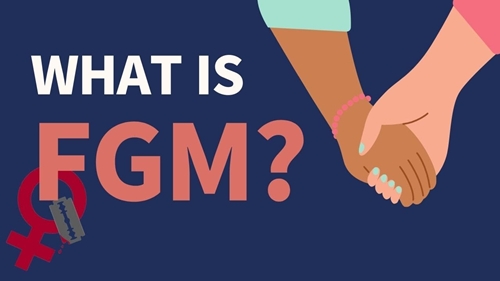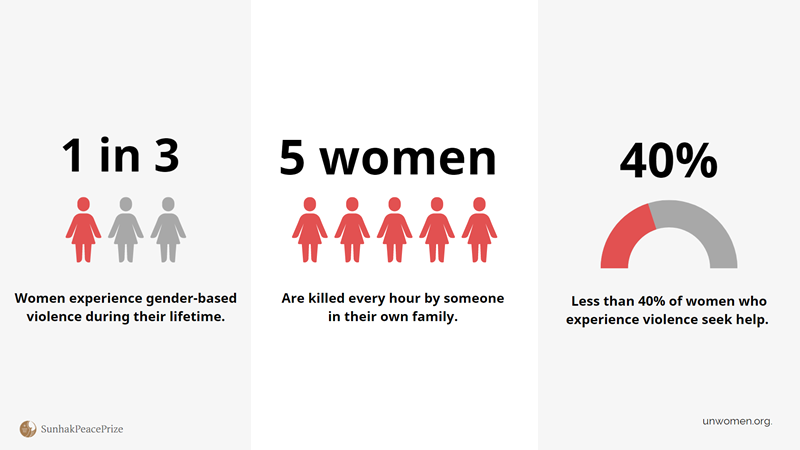
Gender-based violence refers to any act of violence that causes physical, sexual, psychological, or socio-economic harm to women. One in three women experience gender-based violence during their lifetime, and 5 women are killed every hour by someone in their own family. However, only 40% of them seek help, which means that 60% of women affected by violence live in despair, enduring pain that can be fatal.
Violence against women and girls take place
every day,
many times over,
and in every corner of the world.
Gender-based violence (GBV) is a pervasive violation of human rights that affects a significant number of women and girls worldwide. It is estimated that 1 in every 3 women will experience physical or sexual violence in their lifetime.
The impact of GBV on the physical and mental well-being of victims is significant and long-lasting. Victims and survivors may experience physical health problems, as well as emotional trauma that can lead to self-harm, isolation, depression, and even suicidal attempts.
Despite its widespread occurrence, GBV often goes unreported due to fear of criticism or economic repercussions. Moreover, many victims and perpetrators do not recognize it as a form of violence or abuse that requires intervention.
As a result, the problem of GBV persists and progress towards addressing it remains slow.
―
Q. What is Gender-Based Violence (GBV)?
―
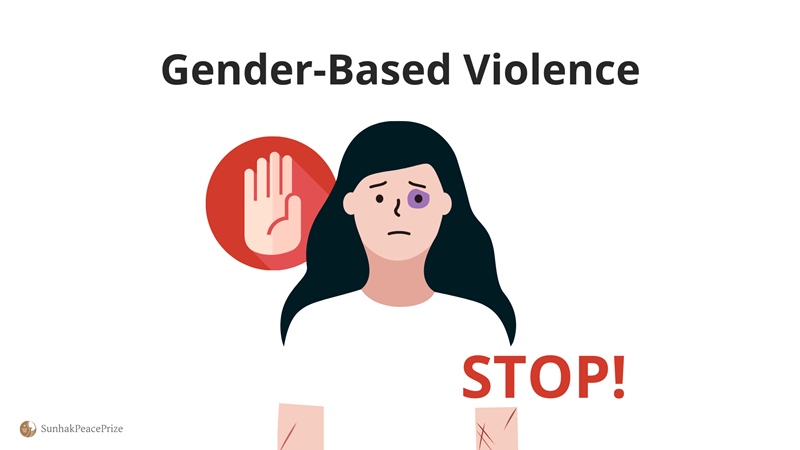
“Gender-based violence,” “violence against women,” and “gender-based violence against women” are all terms used to describe forms of violence that specifically target individuals based on their gender. Let’s take a look at each term and how they are different.
Gender-based violence
Gender-based violence refers to any act of violence against a person because of their gender or gender identity. It can take many forms, including physical, sexual, psychological, or socio-economic.
The Council of Europe defines gender-based violence based on the Istanbul Convention (2011) as the following:
“Gender-based violence refers to any type of harm that is perpetrated against a person or group of people because of their factual or perceived sex, gender, sexual orientation and/or gender identity.”
In other words, men can also be a target of gender-based violence. Statistically, the number of such cases is much smaller in comparison with women, but it should not be neglected. In addition, the Council of Europe mentions “perceived gender,” which refers to LGBT+ (lesbian, gay, bisexual, transgender and others who do not fit into the traditional gender category). Violence against them falls within the scope of GBV.
Gender-based violence against women
The term gender-based violence against women is used to pinpoint women as the victims.
Article 3 of the Council of Europe Convention on preventing and combating violence against women and domestic violence (Istanbul Convention 2011) as the following:
“violence that is directed against a woman because she is a woman or that affects women disproportionately”
Violence against women
This term includes all types of violence that targets women. The Council of Europe define it as the following:
“all acts of gender-based violence that result in, or are likely to result in, physical, sexual, psychological or economic harm or suffering to women (including threats of such acts, coercion or arbitrary deprivation of liberty, whether occurring in public or in private life)”
In short, “gender-based violence” is a broad concept that includes men, women, and LGBT+. But because it affects women disproportionately more than men, the term is generally used in the same sense as “violence against women.”
―
Q. What causes gender-based violence?
―

Answer: Same as any other type of violence – imbalance of power.
GBV is a manifestation of power and control, with the intention to insert that superiority on individuals or groups based on their gender. It is deeply rooted in the social and cultural structures, norms and values that govern society, and is often perpetuated by a culture of denial and silence.
This can happen in both the private and public settings, including the home, workplace, school, and community. Unfortunately, it is not uncommon for a partner or spouse to be the primary perpetrator. But it can be committed by anyone, including family members, colleagues, acquaintances, or strangers.
―
Types of gender-based violence
―
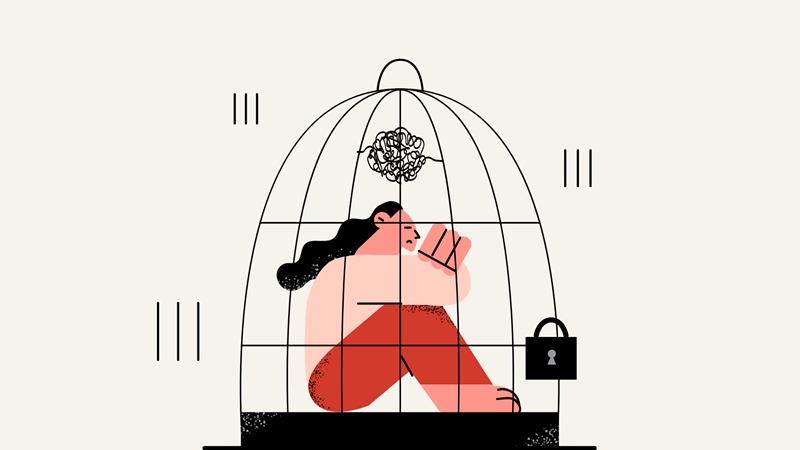
GBV is carried out in various forms, including sexual, physical, verbal, psychological (emotional), or socio-economic violence. The spectrum of GBV ranges from subtle forms such as verbal abuse and hate speech on the Internet, to more severe forms like rape and murder.
The UN Women categorizes gender-based violence into 7 different types:
1. Domestic Violence
Domestics violence (or intimate partner violence) refers to any act of behavior that is used to exert power and control over an intimate partner. It is one of the most common forms of violence that women experience, which includes physical, sexual, emotional, psychological, and economic actions or threats of actions.
◾ Economic violence: This type of violence involves controlling a person’s access to financial resources, making them financially dependent, or limiting their ability to attend school or work.
◾ Psychological violence: This form of violence involves causing fear through intimidation, making threats to harm the victim, their loved ones, or their property, playing mind games, or forcing isolation from friends, family, and community.
◾ Emotional violence: This type of violence undermines a person’s self-worth by subjecting them to constant criticism, belittling their abilities, name-calling, and verbal abuse, damaging their relationship with their children, or preventing them from seeing friends and family.
◾ Physical violence: This form of violence involves inflicting harm or attempting to do so through actions such as hitting, kicking, burning, grabbing, pinching, shoving, slapping, hair-pulling, biting, denying medical care, forcing drug or alcohol use, or any form of physical force, including property damage.
◾ Sexual violence: This type of violence involves forcing someone to engage in sexual acts without their consent.
2. Femicide
Femicide refers to the intentional killing of women because of their gender. Most femicides are committed by partners or ex-partners. In 2021, 45,000 women and girls were murdered by someone in their family (partner, parent, uncle, or sibling).
◾ Honor killing: In honor killing, a woman or girl is killed for the reason that she has brought dishonor or shame upon the family. These killings often are related to sexual purity and perceived violations by female family members.
3. Sexual Violence
Sexual violence refers to any sexual act committed without the consent of another person. This includes acts performed against individuals who are unable to give consent, such as children, those with mental disabilities, and those who are heavily intoxicated or unconscious due to drugs or alcohol.
◾ Sexual harassment: This act encompasses unwanted physical contact of a sexual nature, such as grabbing, pinching, slapping, or rubbing, as well as non-physical actions such as catcalling, making sexual comments about a person’s appearance, demanding sexual favors, engaging in sexually suggestive staring, stalking, and exposing one’s genitalia.
◾ Rape: This is defined as any non-consensual penetration using any body part of object. It can be by any person known or unknown to the victim, within marriage and relationships, and during armed conflict.
4. Human trafficking
Human trafficking involves the illegal acquisition and exploitation of individuals through the use of force, deception, coercion, or fraud. Millions of women and girls are affected by this inhumane practice, with many of them subject to sexual exploitation.
5. FGM
Female genital mutilation (FGM) is causing injury or altering the female genital organs for non-medical reasons. It is considered a social norm in the Middle East and some regions of Africa for girls to go through this procedure before entering adulthood or marriage. In 1997, it was classified as a violence through a joint statement by WHO, UNICEF, and UNFPA.
(Learn more: Video: What is Female Genital Mutilation (FGM)?)
6. Child Marriage
A marriage is considered child marriage when one or both of the spouses are below the age of 18. It is a violation of the statement that “marriage shall be entered into only with the free and full consent of the intending spouses” in the Universal Declaration of Human Rights. Girls are more prone to forced marriages than boys and are likely to discontinue school and experience other forms of violence.
7. Online or Digital Violence
Online or digital violence refers to using information and communication technology (mobile phone, Internet, social media, computer game, text messages, emails, etc.) to commit violence against a person because of their gender.
―
Facts about gender-based violence
―
Gender-based violence is not limited to women and girls, but according to a WHO report in 2021, at least 1 in 3 women (about 736 million women) experienced intimate partner violence, non-partner sexual violence, or both, more than once in their lifetime.
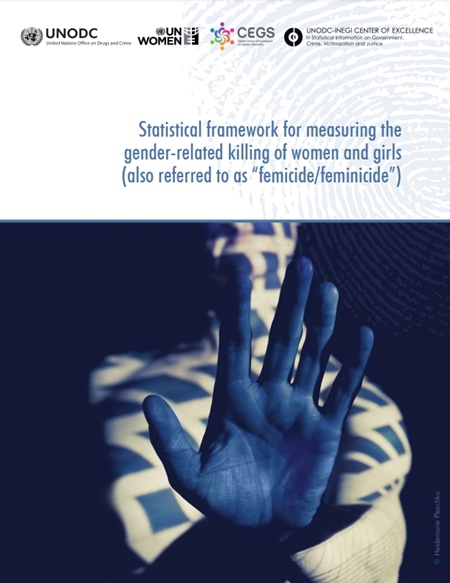
Read report: Statistical_framework_femicide_2022.pdf (unodc.org)
The facts in the report on gender-related killing of women and girls published by the UNODC in 2022 is even more shocking.
1. Every hour, 5 women are murdered by someone in their own family.
Globally, 45,000 women and girls were killed by their intimate partner or other members of their family (parent, uncle, or siblings) in 2021. It means that on average, 5 women and girls were killed by someone in their own family every hour.
Murder by intimate partner or ex-partner accounted for 65% of all intimate partner and family-related murders.
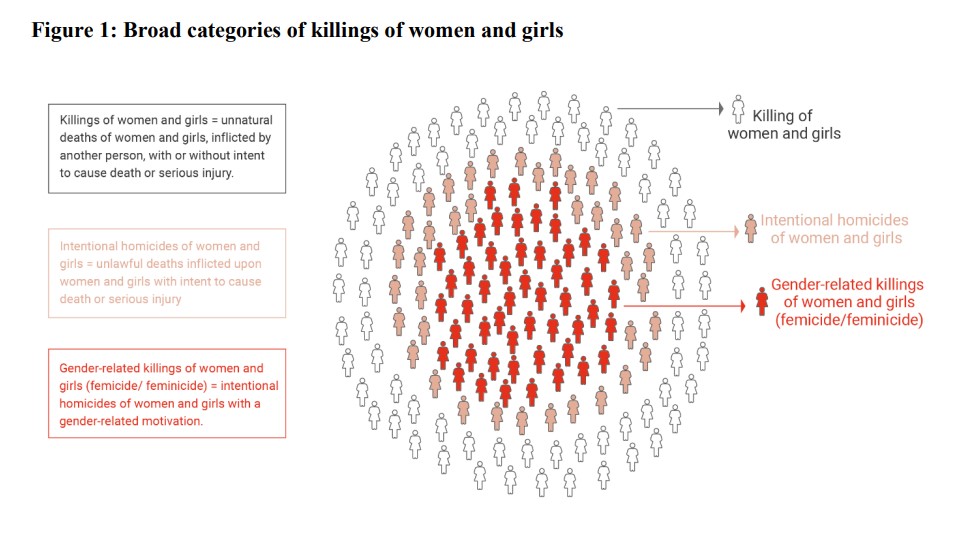
Source: Statistical_framework_femicide_2022.pdf (unodc.org)
2. Femicide is a universal issue
Like all other forms of female-related gender-based violence, femicide is an issue that affects all countries and regions around the world.
According to the report mentioned above, Asia ranked highest in the number of women killed by intimate partner and family-related murders, with an estimated 17,800 victims. It was followed by 17,200 in Africa; 7,500 in the Americas; 2,500 in Europe; and 300 in Oceania.
According to figures adjusted to population size, intimate partner and family-related murder per 100,000 were as follows: Africa (2.5 people), Americas (1.4 people), Oceania (1.2 people), Asia (0.8 people), and Europe (0.6 people).
3. The true scale of femicide is much higher
The reported numbers are alarming, but it is actually only a tip of the iceberg when compared to the numbers in reality.
About 4 out of 10 intentional femicide cases in 2021 do not have enough information to identify them as gender-related murders, due to national variation in criminal justice recording and investigational practices. Therefore, it is very likely that the true number of femicide victims is much higher.
Women and girls experience violence from a very young age. According to a 2020 survey by the UN Populations Fund, 24% of girls aged 1 to 15 experience physical and/or sexual violence.
Countries with the highest level of intimate partner violence are (in order): Papua New Guinea, Afghanistan, Vanuatu, Equatorial Guinea, Kiribati, Solomon Island, Democratic Republic of the Congo, Lebanon, Liberia, and Timor Leste.
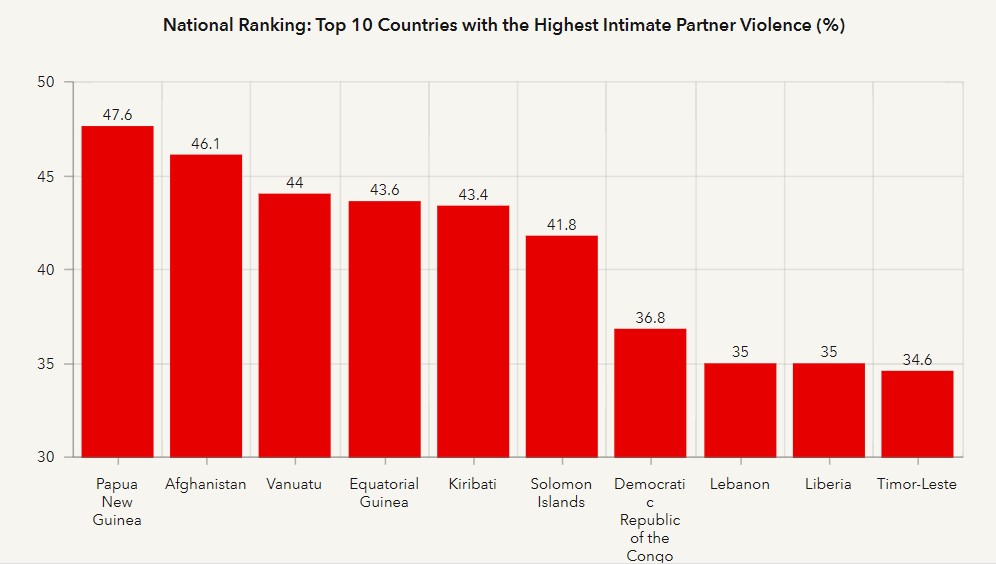
Source: UN Population Fund
In the map below, the darker the color of the country, the higher the level of intimate partner violence.
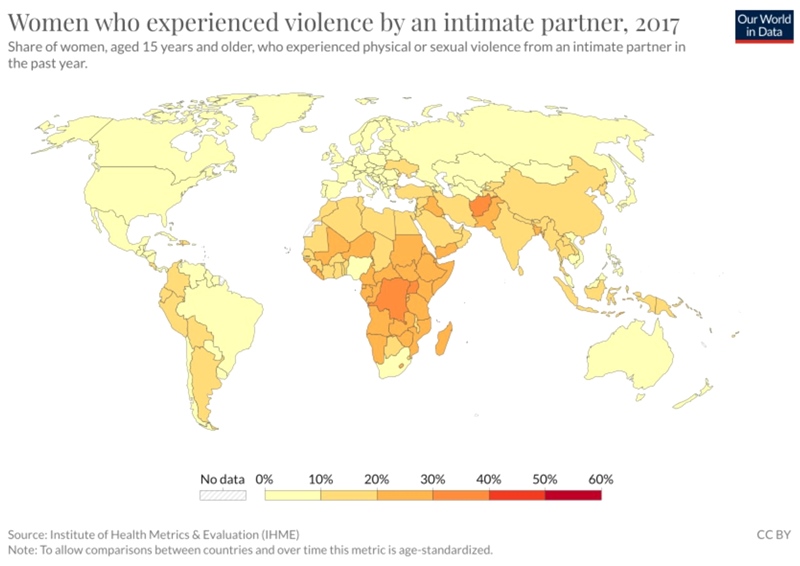
COVID-19 has intensified violence against women
Lockdowns, deepening isolation, stress, and economic uncertainties brought on by the pandemic led to a dramatic increase in violence against women. They were exposed to various forms of GBV, including domestic violence, child marriage, and online sexual harassment.
According to the Rapid Gender Assessments conducted in 13 countries 2021 by UN Women, women who experienced or know other women who experienced violence since COVID-19 was 45%.
The recent Sustainable Development Goals Report 2022 explains the intensified gender-based violence after the pandemic.
According to the report, 26% (641 million) of women between 15 and 49 years of age have experienced physical or sexual violence from their intimate partner more than once in their lives. But in 49 countries, there are no laws to protect women from such violence.
In 2021, one out of every five women in the world married before the age of 18. Sub-Saharan Africa and South Asia had the highest rate of child marriage, with 35% and 28% of young females.
Another report shows that at least 200 million women and girls in 31 countries were victims of FGM.
Currently, women even need their husbands’ permission to work in 18 countries around the world.
―
Women in silence
Why gender-based violence is under-reported
―
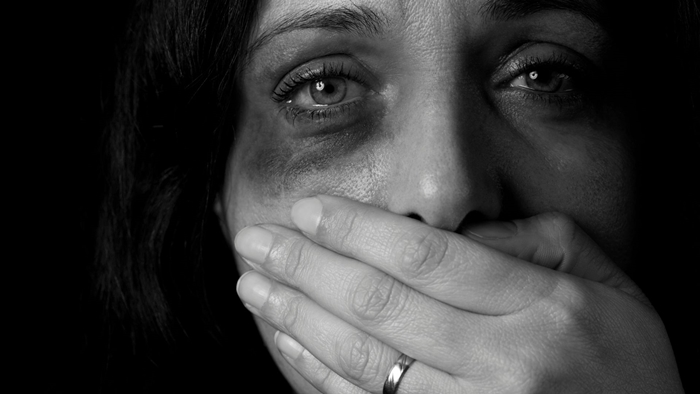
One in three women experience gender-based violence
But they often remain in silence
Why?
The biggest reason is fear.
And the victims often do not realize the need for others to intervene. They may believe that what happens at home should stay at home. Unfortunately, this make it difficult to prevent GBV and exacerbates abuse.
Because the perpetrator is not properly punished for their crime, the victim is exposed to greater harm, sometimes leading to fatal consequences.
In some countries, most types of GBV are illegal and punishable by law. But there are countries without such protection law, and implementation of GBV-related laws are in urgent need.
―
Ways to help prevent gender-related violence
―

Gender-based violence against women and girls is not inevitable.
It can be prevented by leading policy changes, holding governments accountable, and providing services to care for the victims.
The International Rescue Committee has come up with 6 ways to help prevent GBV.
1. Increase funding to end violence against women and girls.
We need funds to run programs. Less than 1% of the world’s humanitarian funds are used for GBV prevention and response programs (as of 20108). And this accounts for less than 1/3 of the funding needs. Strengthening financial support and partnerships for women’s rights groups will be crucial to reducing and preventing gender-based violence.
2. Keep girls in school
Keeping girls in school gives them greater safety and security and more control over their life choices. However, many girls in conflict areas are unlikely to finish school due to child marriage, teenage pregnancy, and housework duties. 43% of girls in Nigeria, 37% of girls in the Democratic Republic of Congo, and 40% of girls in Ethiopia are subject to child marriage, which is a barrier to their education.
3. Champion women’s economic empowerment
Women with economic opportunities can enhance their status in their home and community. Unfortunately, women affected by crisis and displacement suffer trauma and have unequal access to labor markets and financial services.
4. Give women cash
Having cash increases one’s freedom to make a choice in emergency. Banks, governments, and other financial institutions should work together to provide a safe and easy-to-use options for women. For example, providing prepaid debit cards and mobile remittance will help women to buy the goods and services they need.
5. Include women and girls in decision making
Participation of women in decision-making of policies that involve women and girls are essential. A policy and social norm should be in place to allow women to actively participate in leadership positions to address the humanitarian crisis.
6. Engage men in the fight to end violence against women and girls
The main perpetrator of gender-based violence is men. Therefore, male participation is essential to end this violence. We need more men to understand the need for and actively promote gender equality in their daily lives to resolve this issue.
Half the world is women. But power and wealth are disproportionately leaned toward men, often acting as a harsh violence against women.
Women’s rights are improving, but many issues still remain as obstacles until all women have universal human rights: from regressive laws that aggravate punishment for domestic violence perpetrators to the use of force against those speaking out against femicide and gender-based violence.
We still have a long way to go, but as with anything else, change starts with one small step.
“A Society that fails to uplift the voices of women cannot achieve true peace and happiness.”
from Mother of Peace
Dr. Hak Ja Han, Founder of the Sunhak Peace Prize
Learn more about this issue: Reason for her Death: Improper Hijab
GBV-related International organizations: UN Population Fund: Gender Equalit UN Population Fund: Female Genital Mutilation UN Population Fund: Child Marriage UN Population Fund: Engaging Men and Boys UN Population Fund: Gender-based Violence UN Department of Economic and Social Affairs: Gender Statistics |
Written by Sharon Choi
Director of Planning
Sunhak Peace Prize Secretariat

